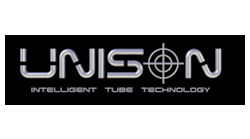Freedman Seating Company Chooses Unison Tube Bending Technology
A bespoke Unison Twin Head All Electric CNC Bending Machine continues to outperform for the seat manufacturing firm, The Freedman Seating Company, expanding manufacturing capacity at its plant in Chicago.
The Freedman Seating Company engineer and manufacture seats and seating related products for many different applications. Their product lines include bus, rail, marine, delivery truck, specialty and commercial vehicle seating.
Freedman’s decision to search for a new tube bending machine was driven mainly by the nature of their seat products including formed seat frames. The company wanted to replace their old hydraulic tube bender and its outdated software with state-of-the-art bending capabilities. They needed a tube bending solution that would reduce time-consuming set up, increase reliability and repeatability, and increase productivity. The Freedman Company needed to upgrade to an all-electric CNC tube bender to achieve their goals.
The all-electric architecture provides significant benefits: a rapid and repeatable software-based set-up, lower energy consumption and reduced noise compared with traditional hydraulically powered bending machinery. In addition to this, they sought a tube bending solution that had user-friendly software, was easy to program and offered 3D-simulation to improve accuracy and bend speed. To further optimize their process, Freedman needed a machine that could perform multiple bends at the same time.
Unison was one of the few manufacturers of all-electric, twin head, state of the art tube bending equipment. They designed and built a bespoke tube bending machine to meet The Freedman Seating Company’s specific needs and expectations.
The Unison twin head bender software allows The Freedman Company to design complex tube shapes without generating cut off waste and enables them to double their productivity by using twin head bending technology. The fully automated tube bender with auto material loading and seam detection sensors also reduces material handling.
“Our experience with Unison over the course of 17 years has been excellent. The quality of the service and support Unison provides over the years is exceptional. The staff is very knowledgeable, supportive, friendly and provides prompt responses to our service needs. We purchased our first twin head Breeze tube bender 17 years ago and added another Twin-head Unison bender 7 years later. One of the many important qualities of these benders is the reliability and the consistency they provide our manufacturing process on a daily basis.” Shlomo Bar-Sheshet, Manufacturing Engineer, Freedman Seating Company.
Compared to hydraulically-powered bending machines, the all-electric architecture of Unison’s twin-head benders provides users with major cost-saving advantages. In addition to easier functional integration, faster setup and more readily achievable bending consistency, the machines use considerably less energy. Significant power is only consumed during the bending operations, whereas hydraulic benders normally require the oil pump to maintain a pressure reserve, wasting energy. Tests conducted by Unison show that during bending operations, a twin-head all-electric machine only uses about 10 percent of the electricity needed by a comparable hydraulic bending machine. Further energy savings are also realised, because it is standard practice to heat or cool hydraulic oil to ensure bending consistency.
Despite their popularity, twin-head bending machines are only produced by a handful of manufacturers, and most are large hydraulically-powered systems. Unison takes a different design approach: its twin-head bending machines have an ‘all-electric’ architecture, with all motion axes controlled by servomotors. The standard machine configuration comprises two separate bending heads supported on independent ball screw driven linear carriages. A fifth axis controls a compact and fast actuating tube ‘centre grip and rotate’ unit, which can be mounted in a fixed position between the two heads or removed from the machine. The flexibility of this design facilitates production of either 2-D or 3-D parts and accommodates both symmetrical and asymmetrical parts.
The servomotor-driven centre grip and rotate unit is exceptionally compact and designed specifically to combine ease and speed of loading/unloading with a highly secure grip. It has an extremely narrow profile, allowing very close approach of the two bending heads.



